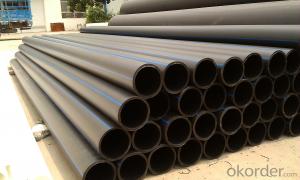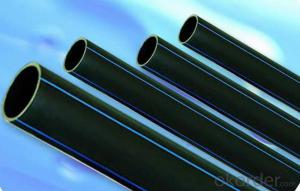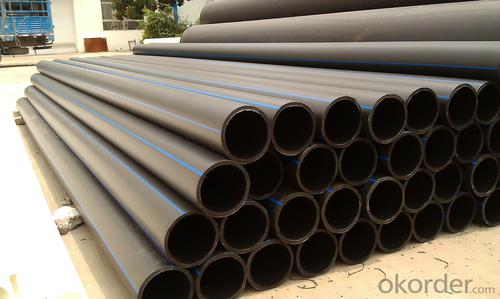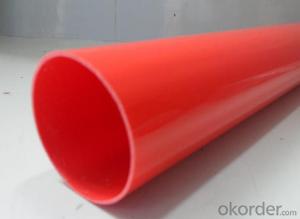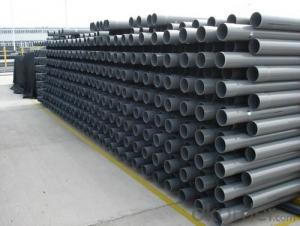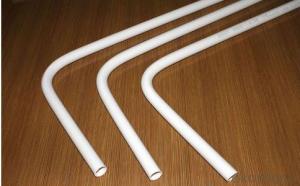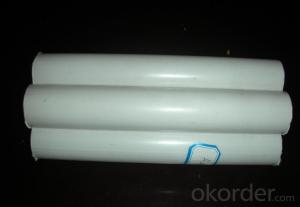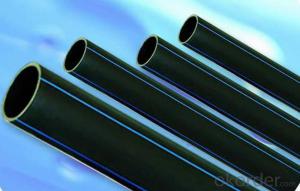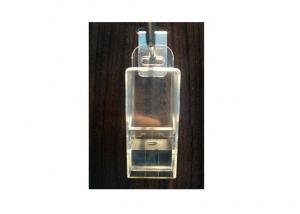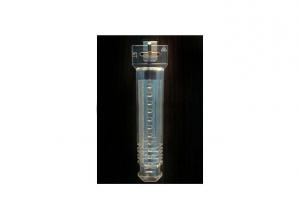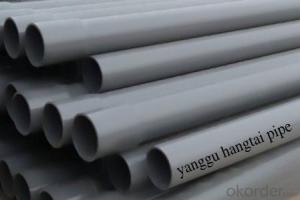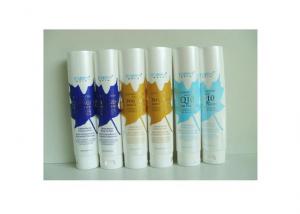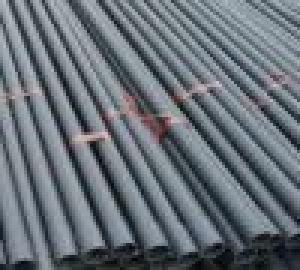Plastic Tubes HDPE Pipe ISO4427-2000 DN160
- Loading Port:
- China Main Port
- Payment Terms:
- TT OR LC
- Min Order Qty:
- -
- Supply Capability:
- -
OKorder Service Pledge
OKorder Financial Service
You Might Also Like
Physical properties[edit]
Polyethylene is a thermoplasticpolymer consisting of long hydrocarbon chains. Depending on the crystallinity and molecular weight, a melting point and glass transition may or may not be observable. The temperature at which these occur varies strongly with the type of polyethylene. For common commercial grades of medium- and high-density polyethylene the melting point is typically in the range 120 to 180 °C (248 to 356 °F). The melting point for average, commercial, low-density polyethylene is typically 105 to 115 °C (221 to 239 °F).it is transprant.
Chemical properties[edit]
Most LDPE, MDPE and HDPE grades have excellent chemical resistance, meaning that it is not attacked by strong acids or strong bases. It is also resistant to gentle oxidants and reducing agents. Polyethylene burns slowly with a blue flame having a yellow tip and gives off an odour of paraffin. The material continues burning on removal of the flame source and produces a drip.[3] Crystalline samples do not dissolve at room temperature. Polyethylene (other than cross-linked polyethylene) usually can be dissolved at elevated temperatures in aromatic hydrocarbons such as toluene or xylene, or in chlorinated solvents such as trichloroethane or trichlorobenzene.[4]
GB/T13663-2000:
| PE63管材规格 | |||||
| 公称 外径dn,mm | SDR33 | SDR26 | SDR17.6 | SDR13.6 | SDR11 |
| 公称压力 PN,Mpa | |||||
| 0.32 | 0.4 | 0.6 | 0.8 | 1.0 | |
| 公称 壁厚 | 公称 壁厚 | 公称 壁厚 | 公称 壁厚 | 公称 壁厚 | |
| 16 | 2.3 | ||||
| 20 | 2.3 | 2.3 | |||
| 25 | 2.3 | 2.3 | 2.3 | ||
| 32 | 2.3 | 2.4 | 2.9 | ||
| 40 | 2.3 | 2.3 | 3.0 | 3.7 | |
| 50 | 2.3 | 2.9 | 3.7 | 4.6 | |
| 63 | 2.3 | 2.5 | 3.6 | 4.7 | 5.8 |
| 75 | 2.3 | 2.9 | 4.3 | 5.6 | 6.8 |
| 90 | 2.8 | 3.5 | 5.1 | 6.7 | 8.2 |
| 110 | 3.4 | 4.2 | 6.3 | 8.1 | 10.0 |
| 125 | 3.9 | 4.8 | 7.1 | 9.2 | 11.4 |
| 140 | 4.3 | 5.4 | 8.0 | 10.3 | 12.7 |
| 160 | 4.9 | 6.2 | 9.1 | 11.8 | 14.6 |
| 180 | 5.5 | 6.9 | 10.2 | 13.3 | 16.4 |
| 200 | 6.2 | 7.7 | 11.4 | 14.7 | 18.2 |
| 225 | 6.9 | 8.6 | 12.8 | 16.6 | 20.5 |
| 250 | 7.7 | 9.6 | 14.2 | 18.4 | 22.7 |
| 280 | 8.6 | 10.7 | 15.9 | 20.6 | 25.4 |
| 315 | 9.7 | 12.1 | 17.9 | 23.2 | 28.6 |
| 355 | 10.9 | 13.6 | 20.1 | 26.1 | 32.2 |
| 400 | 12.3 | 15.3 | 22.7 | 29.4 | 36.3 |
| 450 | 13.8 | 17.2 | 25.5 | 33.1 | 40.9 |
| 500 | 15.3 | 19.1 | 28.3 | 36.8 | 45.4 |
| 560 | 17.2 | 21.4 | 31.7 | 41.2 | 50.8 |
| 630 | 19.3 | 24.1 | 35.7 | 46.3 | 57.2 |
- Q: Are plastic tubes resistant to staining?
- Yes, plastic tubes are generally resistant to staining.
- Q: Am I even safe to drive to the mechanic or should I just two it? Holy crap, that could have been there for months for all I know since I last checked.
- You okorder /
- Q: There are so many plastic tubes in the beer brewing process, and the cleaner that comes with the kit is not good enough. I was wondering if anyone has any good tips or tricks.
- soak them in bleach water, a sink full of water to 1 cap of bleach.
- Q: Is it acrylic or is there some other that wont shatter?
- If okorder /... Hopefully this helps!
- Q: What are the different shapes of plastic tubes available?
- There are various shapes of plastic tubes available, including round, square, rectangular, oval, and triangular.
- Q: Is plastic pipe polythene good or polypropylene?
- Polyethylene pipe: light weight, good toughness, good low temperature resistance, non-toxic, low cost, high impact strength, compressive strength and tensile strength but lower; connection: flange, welding hot thread connection;
- Q: I have my own Bath Body company and want to add foot care to my line. Well I have the ingredients and know how to make the foot care, but I have yet to be able to find EMPTY, plastic tubes I can fill to be able to sell my product. Any ideas on a supplier? I'm done many searches in many serach engines with no luck! :-(
- I found this site that might sell the supplies you are looking for. Just search for pump in the upper right hand corner of the site.
- Q: There is a row of large planters outside my workplace. Each one is about the size of a bathtub. Each one has this capped white plastic tube the thickness of a beer can that sticks in halfway in the soil at a slight angle and doesn't appear to be connected to anything. What is it for?
- I could be a hole in the soil in which to pour water, and the pipe keeps the sides from caving in, whilst it would likely have holes in it, allowing for the water to be soaked up by the soil.
- Q: UPVC drain plastic pipes, can you use hot water?
- Hot water is best to use PP plastic pipes, UPVC can only withstand the highest temperature of 55 degrees, but not long at this temperature, or it will accelerate the aging of the tube, bending, and even cracking.
- Q: How do plastic tubes compare to silicone tubing?
- Plastic tubes and silicone tubing differ in several aspects. Plastic tubes are generally more rigid and less flexible compared to silicone tubing, which offers superior flexibility and elasticity. Silicone tubing has a wider temperature range tolerance and is resistant to extreme temperatures, chemicals, and UV radiation, whereas plastic tubes may be more prone to cracking, discoloration, or degradation under certain conditions. Additionally, silicone tubing is often considered more biocompatible and suitable for medical or food-grade applications, whereas plastic tubes are commonly used in industrial or general-purpose settings.
Send your message to us
Plastic Tubes HDPE Pipe ISO4427-2000 DN160
- Loading Port:
- China Main Port
- Payment Terms:
- TT OR LC
- Min Order Qty:
- -
- Supply Capability:
- -
OKorder Service Pledge
OKorder Financial Service
Similar products
Hot products
Hot Searches
Related keywords
